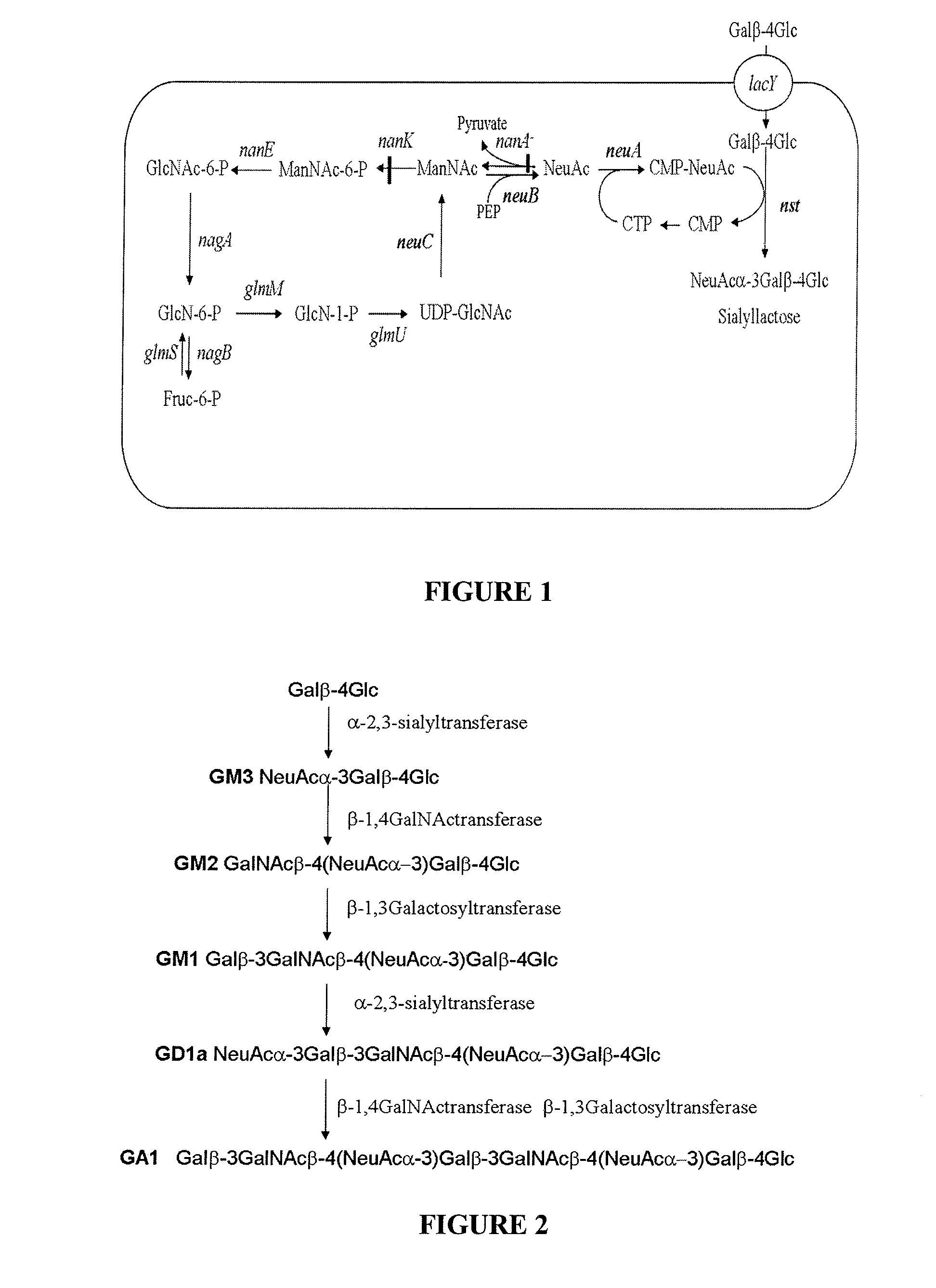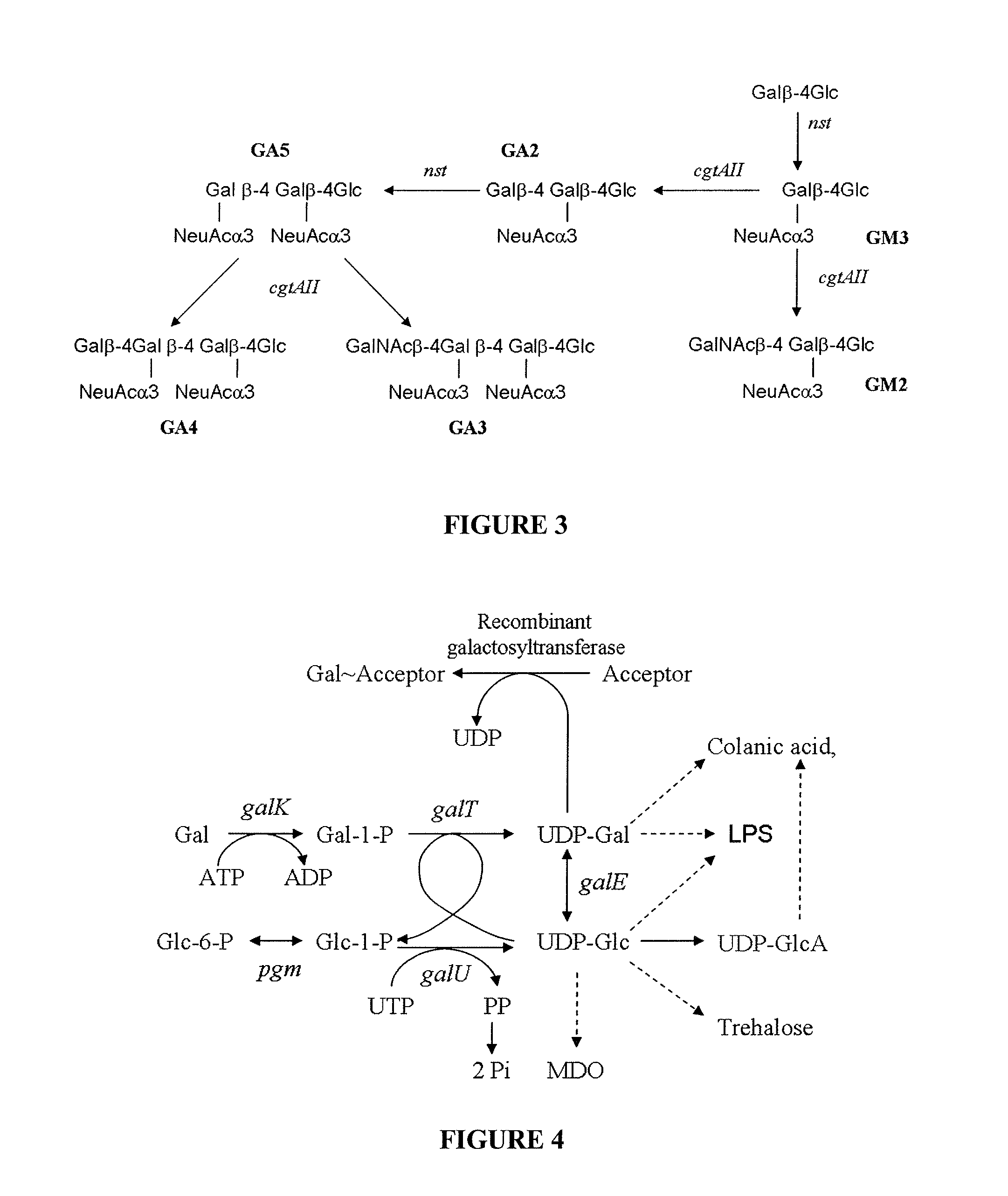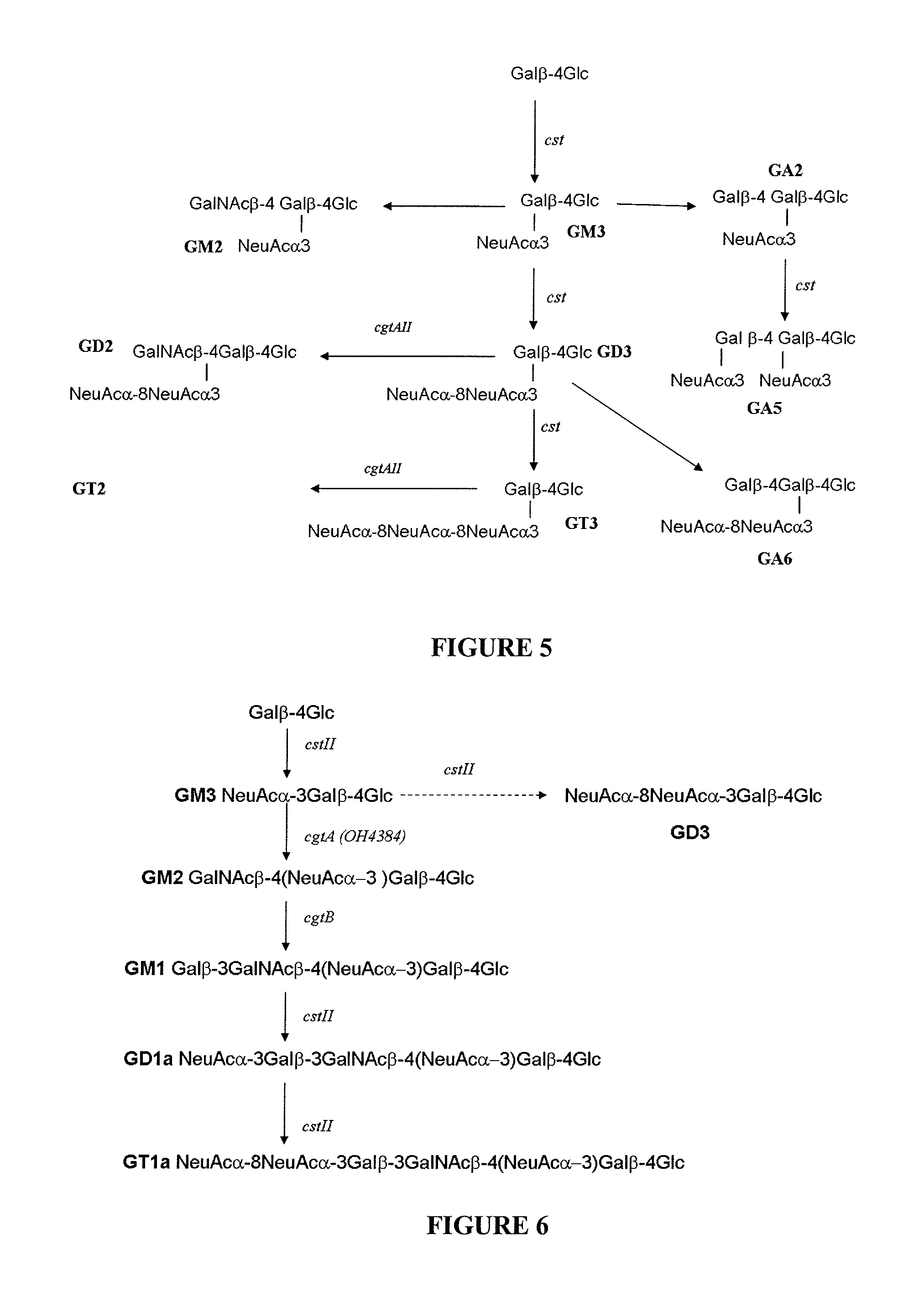Method of producing sialylated oligosaccharides
a technology of sialylated oligosaccharides and synthesis methods, which is applied in the direction of enzymology, transferases, instruments, etc., can solve the problems of low yield, inability to achieve large-scale production of sialylated oligosaccharides, and inability to chemically synthesiz
- Summary
- Abstract
- Description
- Claims
- Application Information
AI Technical Summary
Benefits of technology
Problems solved by technology
Method used
Image
Examples
example 1
Construction of nanA, nanKA and nanKETA Mutants
[0116]All mutants were constructed from strain DC (Dumon et al., 2005) which was a strain DH1 derivative carrying the lacZ and lacA mutations. Since all derivatives of strain DH1 are recA mutant, they were transformed with the low copy plasmid pEXT22 (Dykxhoorn et al., 1996) carrying a functional recA gene and a kanamycin resistance to recover a transient RecA+ phenotype for the gene inactivation procedure that involved DNA recombination. Once the gene has been disrupted, the plasmid was cured by growing the cell without kanamycin and screening for RecA− phenotype.
[0117]The strain AZL was constructed from strain DC by inactivating nanA using the suicide plasmid pMAK705 (Hamilton et al., 1989) as previously described (Priem et al., 2002).
[0118]To construct the strain ZLKA from strain DC, the nanKETA genes were disrupted by removing a 3.339 kb segment in the chromosomal DNA using the previously described one-step procedure that employs PC...
example 2
Cloning of neuBCA Genes
[0121]A 2.995 DNA fragment containing the sequence of the genes neuBCA was amplified by PCR using the genomic DNA of Campylobacter jejuni strain ATCC 43438 as a template.
A KpnI site was added to the left primer:
[0122]
(SEQ ID No 14)5′GGTACCTAAGGAGGAAAATAAATGAAAGAAATAAAAATACAA
and a XhoI site was added to the right primer
[0123]
(SEQ ID No 15)5′CTCGAGTTAAGTCTCTAATCGATTGTTTTCCAATG.
[0124]The amplified fragment was first cloned into pCR4Blunt-TOPO vector (Invitrogen) and then sub-cloned into the KpnI and XhoI sites of pBBR1-MCS3 vector to form pBBR3-SS.
example 3
Production of Sialyllactose by Metabolically Engineered E. coli Strains
[0125]Sialyllactose production was investigated with different mutant strains contained the N. meningitidis nst gene for α-2,3 sialyltranferase and the pBBR3-SS plasmid that contained the C. jejuni genes neuC, neuB and neuA encoding N-acetylglucosamine-6-phosphate-epimerase, sialic acid synthase and CMP-Neu5Ac synthetase respectively. Production of sialyllactose was estimated by the colorimetric quantification of sialic acid in both the intra and extracellular fractions (Table 2). The results showed that the nanA mutant AW1 and the DC6 strain, which contained no mutation in the sialic acid operon, produced low amount of sialyllactose with a similar production yield. The two mutants AZK1 and DC7 that carried the nanK and nanA mutations both produce a four time higher quantities of sialyllactose. No sialic acid could be detected in the control culture of DC7 incubated without lactose, indicating the high level of t...
PUM
| Property | Measurement | Unit |
|---|---|---|
| concentration | aaaaa | aaaaa |
| concentration | aaaaa | aaaaa |
| volume | aaaaa | aaaaa |
Abstract
Description
Claims
Application Information
 Login to View More
Login to View More - R&D
- Intellectual Property
- Life Sciences
- Materials
- Tech Scout
- Unparalleled Data Quality
- Higher Quality Content
- 60% Fewer Hallucinations
Browse by: Latest US Patents, China's latest patents, Technical Efficacy Thesaurus, Application Domain, Technology Topic, Popular Technical Reports.
© 2025 PatSnap. All rights reserved.Legal|Privacy policy|Modern Slavery Act Transparency Statement|Sitemap|About US| Contact US: help@patsnap.com



